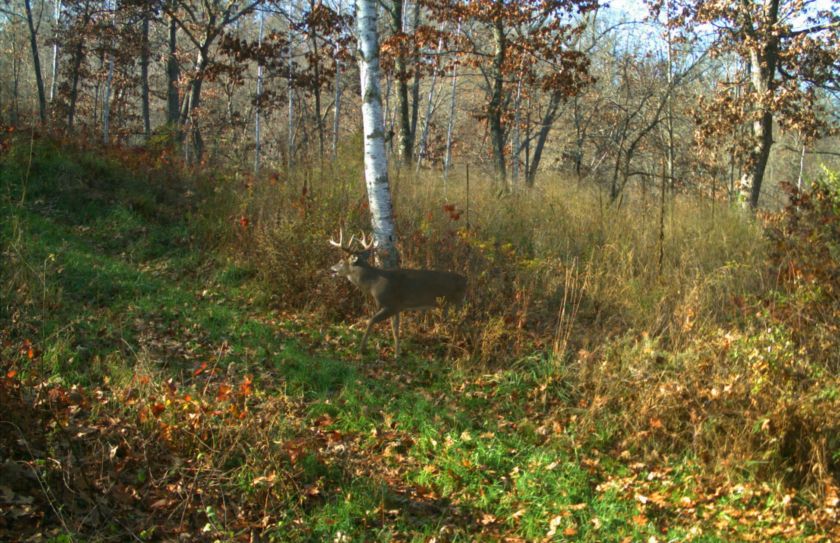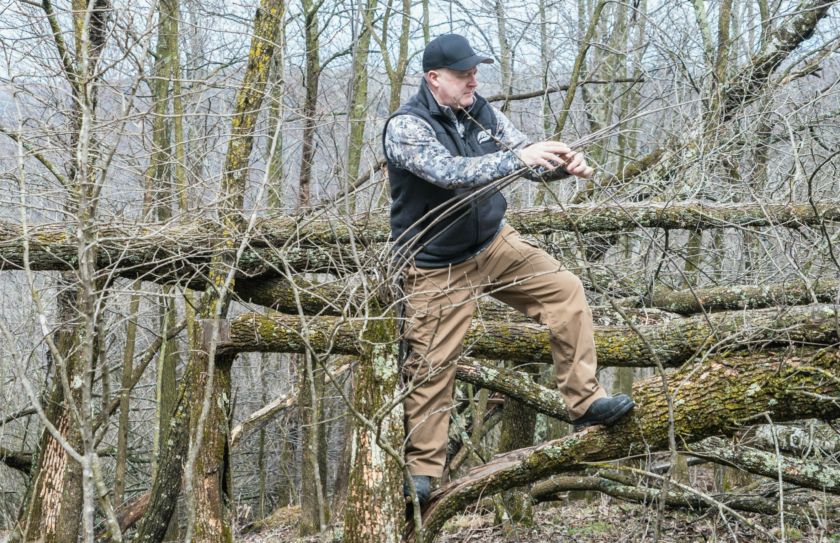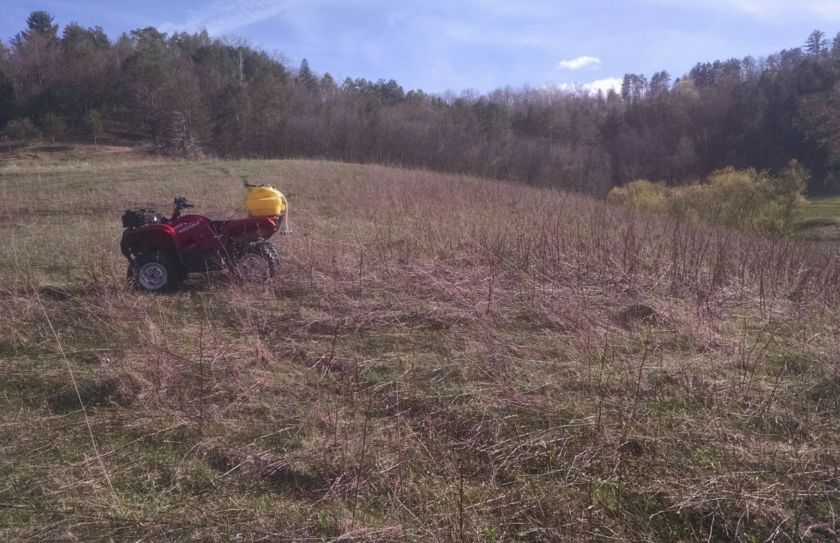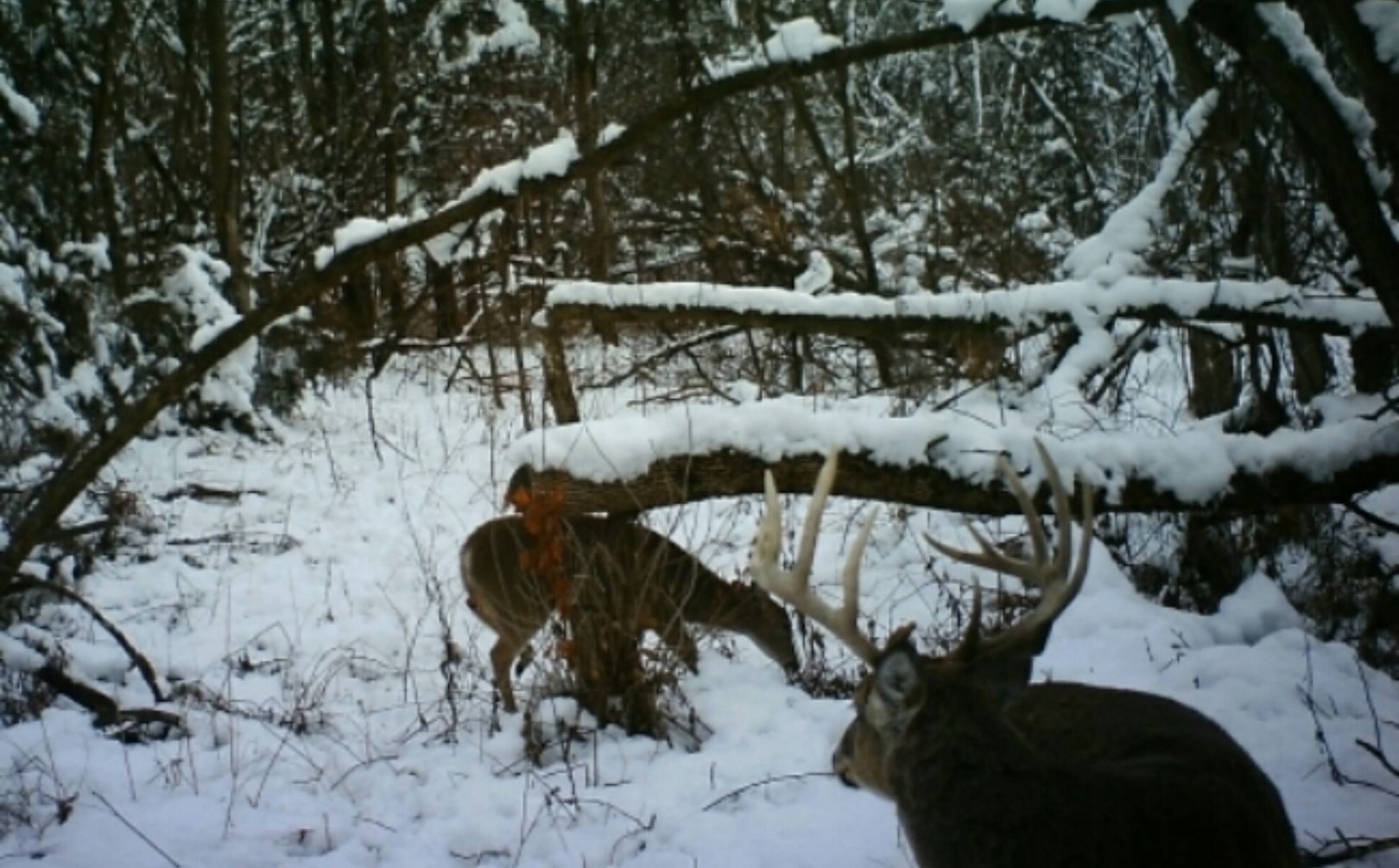
Have you ever considered why there are doe bedding areas, and buck bedding areas? Figuring out where and why buck bedding areas are located in a particular spot in the woods is pretty easy to discover, once you understand why does bed here and bucks bed there. Buck bedding isn't determined by a type or size of deer bed, or even a canopy, type of hinge-cut or carefully manicured bedding platform; instead your work is a whole lot easier than that. Doe family group and buck bedding is determined by location, in fact, bucks really take over what is left after the more dominant female portion of the population chooses their habitat first.

*Make sure to check out my whitetail book series including, "Whitetail Success By Design" and "Food Plot Success By Design", to help you find mature bucks this hunting season!
Where you create buck bedding opportunity on the land you hunt, will ultimately determine the level of success for your small parcel design. Where are the bucks bedding on the land that you hunt? Is there even room for both bucks and does on your land? It may sound very confusing at first, but when you allow food to define where deer choose to bed, the entire process becomes a whole lot easier. Whether you are creating your own small parcel paradise or finding your next public land hotspot, these concepts will guide you to understanding deer bedding behavior.
Doe and Buck Bedding: Food Defined Bedding
The year was 1991. When four hunting buddies - barely out of their teens - set out for a late-season bowhunt in a remote cabin in Michigan's Upper Peninsula. It was almost inevitable that mishaps, adventures, and hunting lessons were sure to follow! How about the time when one of us couldn't draw his bow because that 80-pound draw weight, which felt fine in August, didn't quite feel the same during the single digit temps in December? Or what about a vehicle breakdown during a New Year's Eve of various adventures that led to extensive repairs, empty wallets, and the need to stalk snowshoe hares for food the next few days? There was also the ditch-bound 360 degree spin on I-75 Southbound with a trailer in tow, as well as the frozen "deercicles" stacked like cordwood in the bed of the pickup, after many more days on the deer pole than expected. Limited funds, inexpensive equipment, and a whole lot of stubbornness, fueled by the inexperience of youth; all shared with more laughs than we deserved with the mishaps that we created. Those were indeed the good old days...and we didn't even know it.
Our simple tactic during those late-season hunts was to locate a solid covering of deer tracks in the public land deer yards, clearcuts, or open hardwoods. The next step was to hang a treestand on the downwind side of the movement and settle in for an afternoon sit. When the deer had been forced into the cedars due to heavy December snows, we really had a lot of fun, sometimes seeing a dozen or more deer in an area that rarely offered an individual deer sighting!
While hunting for dinner on old snow, following our New Year's Eve adventure, we learned a lesson that will last a lifetime. As we crossed through the hard and frozen covering, through the open hardwoods with shotguns in hand, we neared the stand of cedars that we hoped would offer a snowshoe hare or two. We passed into the edge of the conifer as we moved through the dark timber and towards the distant clearcut of young aspen. As we brushed through a small layer of young balsam fir and stepped onto a small knoll about 50 yards from the clearcut, I still remember the "wow" factor of seeing a solid covering of old deer beds covering an area the size of a large living room. My hunting buddy, Dave, was the first to offer the one major clue as to why so many deer had chosen to bed in such tight quarters. the bed was located near a hunting camp's bait pile! Approximately 200 yards away was one of the most active hunting blind locations, complete with ATV access.
What we discovered that day so long ago was a simple truth that has been repeated consistently over many years: find the food and you'll find the doe family group daytime bedding location. Those doe family groups bedded within earshot of the hunter who entered and exited that particular blind location. Consequently, it was easy to understand why deer were seen only right before dark, if at all.
For over 20 years I have found this simple truth to be one of the most consistent conditions in the whitetail woods. While using food to locate doe family groups, planning for and hunting for mature bucks has become an extremely predictable process. Please follow along as I describe how using your food plots to locate doe family groups is critical for making your parcel not only efficient and easier to hunt, but also more attractive for an appropriate level of mature buck bedding.
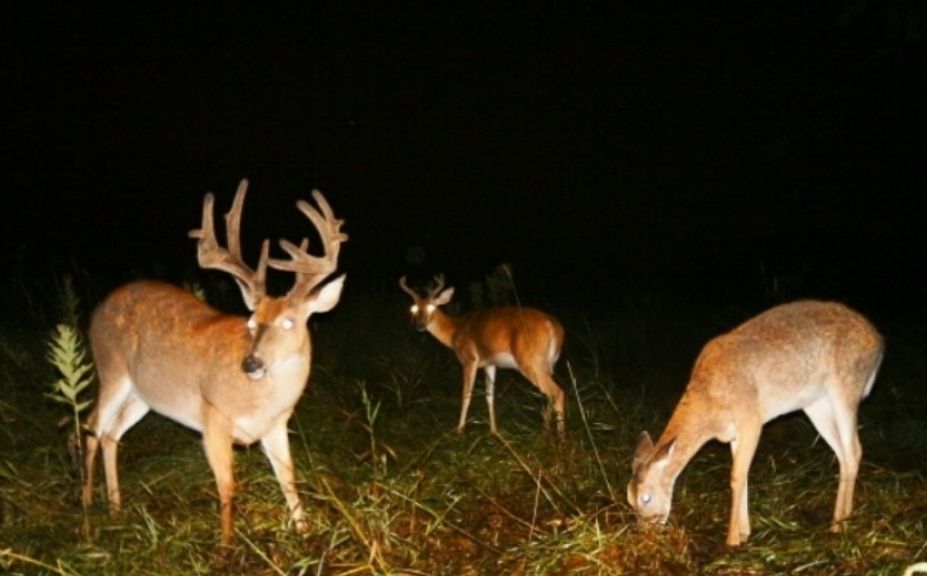
*FOOD defines and aligns, where deer bed. Are your bedding areas well supported by food? To make sure, try reading "Doe Management For Big Bucks On Small Parcels".
Efficient Doe and Buck Bedding Acres
Outside of the fawning period of early to mid-Summer, mature does prefer their own territory, based on the quality of the cover for protecting and raising their young. I have observed that doe family groups like to bed as close to their preferred evening food source as safely possible. I say safely, because in the case of the Upper Peninsula bait pile that we found in the early 90s, the deer were bedded quite a distance through the heavy cover from the heavily defined hunter area. Although they were within earshot, they certainly were not within rifle shot when you considered the incredibly thick underbrush of the balsam fir. However, when hunting pressure is removed from the hunting area, there have been many instances when I have found doe family groups bedded during the daytime within 20 yards of their preferred evening food source. When you preserve the security of the bedding area and the food source as part of your overall sanctuary, does will often bed as close to the food as the surrounding cover allows. And what comes next? Buck bedding opportunity; but not until does have defined adequate doe bedding areas first.
One convenient way to think about food and doe bedding areas is that "an acre of food equals 2 acres of does". You don't need 10 acres for several related doe and fawns, but rather, simply the amount of room that they can fit within that's adjacent to a quality, season-long food source. Food sources can dictate where the does and their fawns bed during the daytime hours on your property, and what portions of the rest of the parcel are leftover for buck bedding, since bucks rarely bed alongside doe family groups. Even when bucks are forced into close proximity with each other during winter yarding situations, bucks will often inhabit the fringe areas of the deer yard, preferring to associate with their own bachelor groups.
As easy as it is to dictate where does bed, it is just as easy to lose the definition of that concept. As soon as you combine numerous scattered food sources with fewer bedding areas than the number of antlerless deer on your parcel need, than the lack of balance will begin to cause random movements that are very difficult to predict. It is actually very easy to create a parcel that offers zero opportunity for mature buck bedding. I recently heard of a parcel in northern Wisconsin that featured nearly 20, one-eighth acre plots surrounded by heavy cover. Although this sounded good on paper, the landowner would surely have an incredibly hard time patterning the local deer herd, as they had an overabundance of options for food and cover at every turn. When a parcel lacks defined movement patterns, the result is that hunters spook deer unnecessarily because they can't predict with much certainty where deer will be when accessing the property. The efficiency that you can achieve on your parcel starts with matching the acres of habitat improvement to the population of the local deer herd. Furthermore, by strategically locating those habitat improvements you can create a parcel that is much more attractive to the reclusive nature of mature bucks.
Be sure to checkout our Video Library for more Advanced Whitetail Strategies!
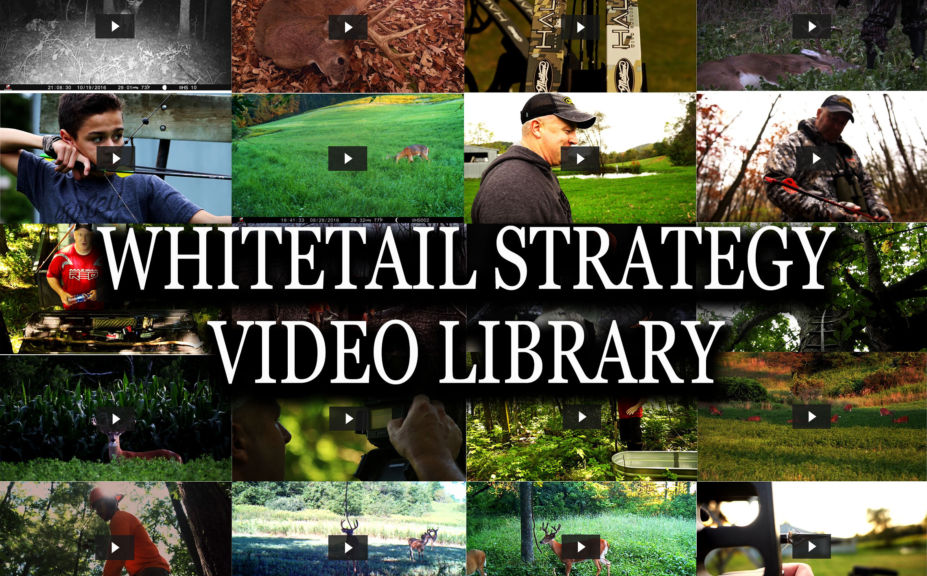
"Leftover" Mature Buck Bedding Attraction
As previously mentioned, does will bed as close as safely possible to their preferred evening food source. By locating food sources in areas that allow you to "hide" does in adjacent bedding cover that you never spook while hunting, you have the opportunity to create a lot of additional cover for buck bedding. However, if your food is scattered and randomly located throughout your parcel, the deer movements are less well defined and difficult to pattern, and there may be limited opportunities for bucks to bed on your parcel. In my first book I introduced the concept of "Depth of Cover". Briefly, this concept suggests that if food sources are located near the borders of your parcel (instead of in the middle), you will have the opportunity to maximize the "depth" of cover on your parcel and thereby have adequate room to establish both doe bedding and buck bedding areas in the areas not occupied by food sources. By strategically selecting food plot locations you can effectively determine where does and bucks bed on your parcel.
Mature bucks are often influenced by the movement patterns of does and fawns between bedding areas and evening food sources. Bucks may not travel the exact same route as the doe family groups, and they may end up at the food source right at, or just after dark, but mature bucks will often follow similar movement patterns. By placing food plots in locations that support adjacent doe bedding areas, and then allowing enough room for mature bucks to bed on the back side of doe bedding areas, you can create attractive buck bedding opportunities that are isolated from the stress of doe family group daily movement patterns between bedding and food source locations. Within mixed agricultural regions where the woodlots frequently offer similar habitat, it is pretty easy to determine where a mature buck might be bedding, by simply seeking out the most remote portions of cover that are farthest away from quality food in any direction. This makes it fairly easy on agricultural land to predict buck movements, because there is a distinct difference between the "edge" bedding areas occupied by the does and fawns, and the more remote areas that could possibly hold mature buck bedding opportunities. However, as the ratio of cover to agricultural land increases, the complexity of determining where a buck may choose to bed, increases.
By using food to define where the does bed, you can more efficiently determine the potential mature buck bedding locations. Bucks will typically bed not too far from doe family group bedding areas. However, within "big woods" or wilderness hunting areas, it is not uncommon to travel several hundred yards or more without finding any deer sign. While scouting public land in Michigan's Upper Peninsula, the first thing I would do when I found an area that contained a high concentration of buck sign was to search for a nearby bait pile to make sure that I wasn't getting too close to other hunters. Buck sign could be a mile or more apart in these remote areas, so rubs and scrapes really stuck out when they were found in high concentrations. There were times that I found little hidden ridges or islands of cover that were a hotspot of bedding activity, and there were other times that I found nearby bait piles of corn, carrots, or beets within the public land. However, whether the sign was adjacent to a bait pile or within and around a hidden buck bedding area a mile away from a bait pile, both locations ultimately related to a food source.
Although distances between bedding and food sources can vary greatly, the typical layout of food, doe bedding, and then buck bedding is something that I have observed in every type of whitetail habitat across nearly 20 different states. In agricultural regions where deer are forced into close proximity with one another due to lack of cover, I have seen the layout of food, doe bedding, and buck bedding to occur over as little as 200 yards. In contrast, in wilderness areas I have seen the distance between food and buck bedding to cover a mile or more, as mature bucks seem to prefer the seclusion and privacy of the most remote areas of cover. Regardless of where you're hunting and managing deer, by using food to establish the order of bedding between doe family groups and bucks, you are much closer to tilting the odds in your favor for eventually hanging a stand and going in for the kill.
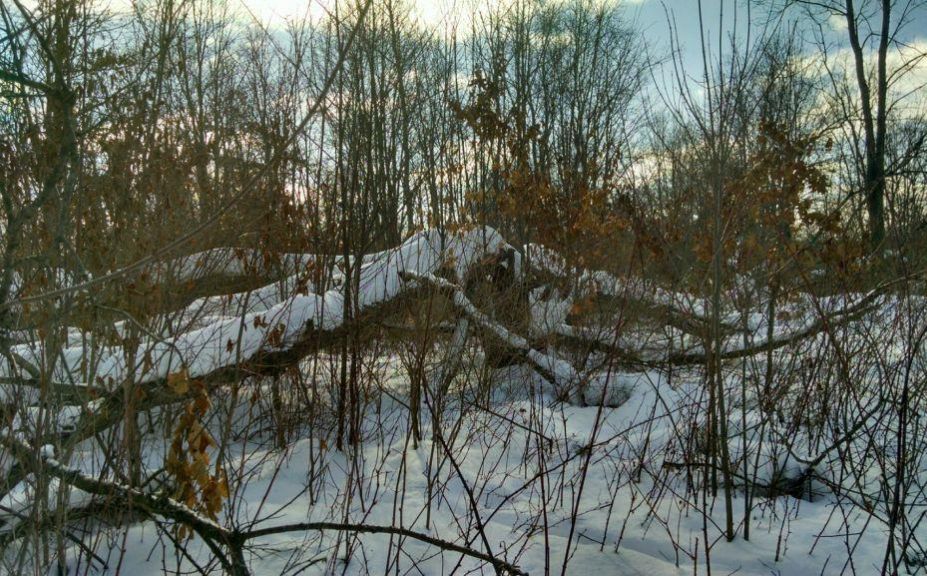
*Do you have enough room left over for a Mature Buck Bedding Area? For more advanced mature buck bedding tips, I encourage you to read "The Mystery Of Building Buck Beds".
Doe-Defined Mature Buck Hunting Success
By defining where food sources are located on your property and then using that food to define doe family group bedding locations and "leftover" buck bedding locations, you can then realize the next step in the process - mature buck hunting. Defining that process takes consistency, not quality. What I mean by that is that as long as your food sources are secure, and feature diverse plantings throughout the entire season, and your adjacent bedding areas are consistent in terms of security, then you have certainly taken the right steps toward defining consistent deer movement patterns. These factors apply to public hunting lands as well, and are why I personally enjoy hunting public land. If you are hunting remote areas of the country that feature very few other hunters, then finding consistent movement patterns can sometimes be as easy as scouting aerial photos and topographical maps and then lacing up your hiking boots. The overall quality of the food and cover on your property is important, but not nearly as important as defining consistent patterns of bedding and food movements on your property that can be used by the local deer herd the entire season. And once you've defined that deer movementenjoy the hunt!
Part of the process of assisting clients on their hunting parcels is in determining where they should hunt, often down to the particular tree to hang a stand. But without first defining the pattern(s) of movement between food and bedding locations, it is very difficult to define both how to access the property as well as where to hunt. Choosing a stand location before either recognizing or defining a solid deer movement pattern is putting the cart before the horse, even if there's sign present to hint of a great spot. By locating a food plot within an area on your parcel that allows you to define a consistent and secure movement patterns, the hunting can become much more predictable and efficient. You can not only find a great spot that features natural or man-made pinch points of movement (e.g., tightly connecting wood lots, field edges, or topography), but you can also determine why and when a deer should be moving through that stand location. By determining why a deer should be moving through an area, you can strengthen the movement pattern by improving the food sources, travel corridors, and bedding areas that may be associated with the movement. The stronger and more secure you make the movement pattern, the easier it will be for you to know when to go in for the kill.
In my estimation, a significant percentage (maybe 80%) of the mature bucks that I've killed have been taken while hunting in the morning between suspected buck bedding areas during the pre-rut or rut. However, I have also killed a fair number of mature bucks in the evening, as I caught them exiting their bedding areas and traveling toward adjacent food sources. The morning ambush locations often take place between remote bedding areas often used primarily by bucks. In contrast, the evening locations have typically been between buck bedding areas located well away from an evening food source, and doe bedding areas located directly adjacent to the food source. By creating adequate bedding areas within the first 50 yards of cover from a major food source, and then locating a stand between that bedding area and a more remote bedding area that may house a reclusive old buck, you can often have repeated hunts, without harming the security of the doe bedding areas or the food source. If the deer movement you are watching is dry, a well-placed waterhole on the way to food can further define the movement patterns and produce an ideal ambush location with a bow.
Well defined deer movement patterns that start with a strategic location to install a food plot, can offer you both morning and evening stand locations, as well as early season, rut, and late season stand locations. I will cover these generalities of mature buck hunting in a later book, but here are a few movement related tips I personally employ:
1. Hunt closer to the food in the evening and closer to inner bedding areas during the pre-rut to rutmornings.
2. Avoid hunting a morning location that offers a high likelihood of success for an evening hunt, such as during early or late-season hunts. Similarly, avoid an evening hunt in a location that you intend to use for a morning hunt in the pre-rut or rut time period. You want the entire line of movement to be as fresh as possible for the most optimal hunting conditions.
3. Try to take a long distance look at the food-end of the movement pattern during late firearm and muzzleloader seasons so that you don't interfere with the line of movement or the food source.
4. It may be more appropriate to hunt within the woods between a bedding area and food source that allows you to get in and out of the stand during late bow season. At the same time, during the early or late bow season it may be better to leave the morning bedding sits alone because deer are either already there before you access your stand in the morning, or because an evening sit within the same line of movement may offer a much higher percentage of success.
5. The stronger the line of deer movement, the more you can take advantage of the stand locations along that line of movement without spooking deer. Defined deer movements offer a much higher potential of success, because it is easier to predict deer movements. In addition, well defined deer movements can also help to minimize the likelihood of deer either traveling on your downwind side while you are in the stand, or alongside the tree you were in, to discover any leftover scent, even several hours after you have left the stand.
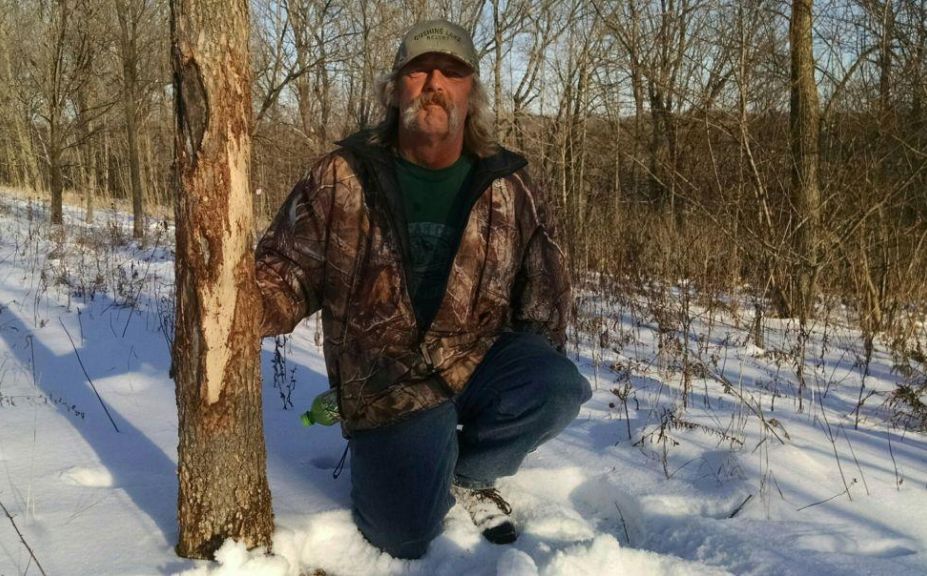
*Don't miss out on the power of hunting cold fronts! Read Cold Front Hunting Strategiesto learn how to find an extremely high level of precision success.
Conclusion
I strongly encourage you to scout and discover three important situations that occur in your whitetail woods: a large feeding area (which may be your own food plots), adjacent doe family group bedding locations, and more remote buck bedding locations. This is a pattern that I have thoroughly enjoyed finding, creating, and often improving on the client parcels that I visit, as well as the parcels that I hunt myself. Various sized pellets and deer beds will tell you where the large doe family groups are hanging out, and areas deeper into the cover with high quality rubbing activity will let you know where the bucks are spending their daytime hours. Recognizing these three occurrences - food, doe bedding, and buck bedding - on public or private land, is critical to your success and will allow for a systematic approach to your hunting efforts throughout the entire season.
I wish I could say that the early 1990's hare-hunting trip made clear to me the deer movement patterns between food, doe bedding locations, and buck bedding locations, but it certainly did not. In those days it was tough to find any buck, let alone a mature buck. However, I did recognize that when you found food, the does were likely not too far away. Now, over 20 years later, I realize that the power of using a food plot on private land can be as effective as the bait pile in that remote section of Michigan's Upper Peninsula. By using food to locate doe bedding areas, I hope that you can take advantage of the opportunity to create well defined movement patterns that allow you to efficiently access and hunt your entire parcel. Whether you are creating a small parcel design or scouting your next public land hotspot, by understanding how food aligns bedding opportunity you will be well on your way to finding success!
